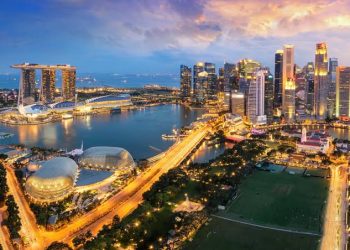The Roads General Authority has successfully finished a project to apply a white coating to the asphalt around Arafat’s Namira Mosque, aiming to reduce temperatures for Hajj pilgrims. This initiative is particularly important as it enhances comfort during one of the hottest and most demanding parts of the pilgrimage.
The coating used for this project is locally manufactured and has the impressive ability to reduce surface temperatures by approximately 20 degrees Celsius. It achieves this significant temperature drop by reflecting more sunlight, thereby absorbing less heat compared to traditional asphalt surfaces.
This project was a collaborative effort involving multiple agencies. It builds on a previous initiative that successfully lowered temperatures by 12 to 15 degrees Celsius on pedestrian pathways leading to the Jamarat area, where pilgrims perform the ritual of stoning the devil. This prior success set a strong precedent for expanding the cooling efforts to other critical areas of the Hajj pilgrimage.
For this year, 25,000 square meters around Namira Mosque have been coated with the white, heat-reflective material. This extensive coverage ensures that pilgrims will experience a more comfortable environment as they gather for prayers and other religious activities.
The reduction in surface temperature is expected to make a notable difference in the overall experience, helping to prevent heat-related discomfort and health issues.
The Roads General Authority’s project highlights the ongoing efforts to improve the Hajj experience through practical and innovative solutions. By addressing the challenging conditions posed by the extreme heat, these enhancements contribute to the safety and well-being of millions of pilgrims who visit the holy sites each year.
This temperature-reducing initiative around Namira Mosque is just one example of how modern technology and local ingenuity are being harnessed to support traditional religious practices. The use of such coatings could serve as a model for other regions with similar climate challenges, potentially benefiting a broader range of outdoor activities and events.









